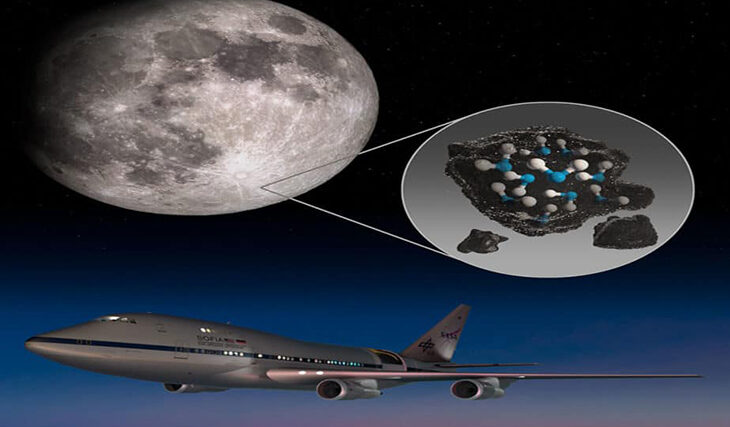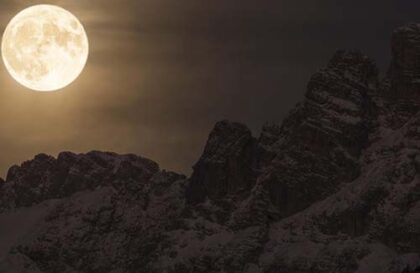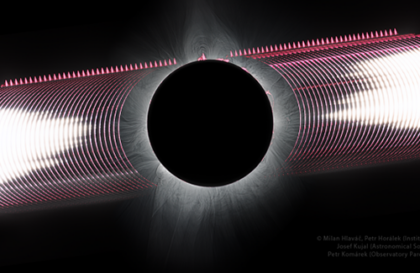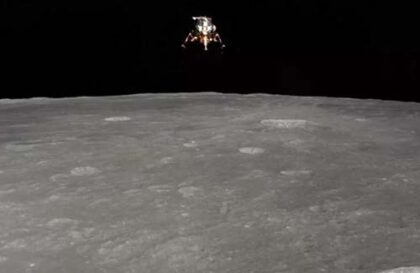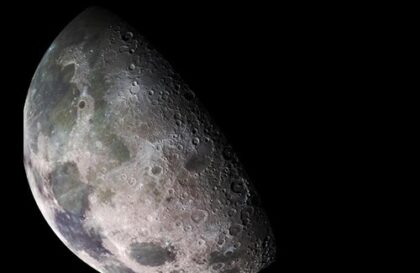Clavius Crater water
Clavius is one of the largest and oldest craters on the Moon. Located on the far southern portion of the Moon’s near side, it is visible in binoculars and small telescopes between the first and third quarter phases.
It is now the site of the amazing discovery of water on the Moon.
This discovery, published in Nature Astronomy in October 2020, was confirmed by an emission spectrum characteristic of water, in contrast to previous observations that could indicate water but were similar to the emission spectrum of hydroxyl (OH) compounds.
Clavius’ water content is between 100 and 400 parts per million, which still makes this region on the Moon significantly drier than the driest places on Earth.
This crater is away from the permanently shadowed regions of the lunar poles where water ice can persist. This means that water may be distributed across the lunar surface, rather than limited to just cold and shadowed regions.
Previous observations indicate that the moon’s surface contains water in concentrations ranging from 100 to 412 parts per million, which is close to the volume of a 12-ounce bottle of water scattered in a cubic meter of lunar soil. This is comparable to a small supply of water. For example, the Sahara Desert contains 100 times more water than the Moon in discovered areas. The discovery raises questions about the origin and persistence of water on the moon’s airless surface.
If scientists collected samples of lunar dust from this region and measured the amount of water and its isotopic composition in a laboratory, they could determine the percentage of water that came from a comet. So a combination of measuring the amount of water and the isotopic composition would allow scientists to understand where exactly this hydrogen, and therefore water, on the Moon comes from.
Where did moon water come from?
The discovery of water on the Moon raises an interesting question: where did it come from? Hydrogen exists in the form of two isotopes: ordinary hydrogen, which has one proton in its nucleus, and deuterium, which contains one proton and one neutron. The Sun emits mostly ordinary hydrogen in the solar wind, but deuterium can form in molecular clouds in interstellar space and thus have origins outside the solar system.
Now imagine that a comet from the distant reaches of the solar system collides with the Moon and delivers a large amount of water material to its surface. Water from this comet will have a unique hydrogen isotopic composition, different from water formed from solar hydrogen or material on the Moon. This can be compared to the comet’s “DNA” for water.
What’s next?
Years of research, including recent discoveries from the SOFIA telescope, point to the presence of water on the Moon. This is an important step because water is a valuable resource in deep space and a key component of life. However, we still need to find out how accessible this water is and can be used.
NASA’s Artemis program aims to study the presence of water on the Moon before sending astronauts there in 2024 and establishing a stable base on the lunar surface. It is important to understand how this resource can be obtained.
Previously it was believed that the Moon was completely devoid of water, but recent studies confirm its presence. For example, the discovery of ice in permanently shadowed craters around the lunar poles confirmed the presence of water. There have also been observations of signs of hydration in sunnier regions of the Moon. However, the form of water present (H2O or OH) requires further research.
Image credit:
https://www.nasa.gov
https://svs.gsfc.nasa.gov
https://www.sciencefocus.com
